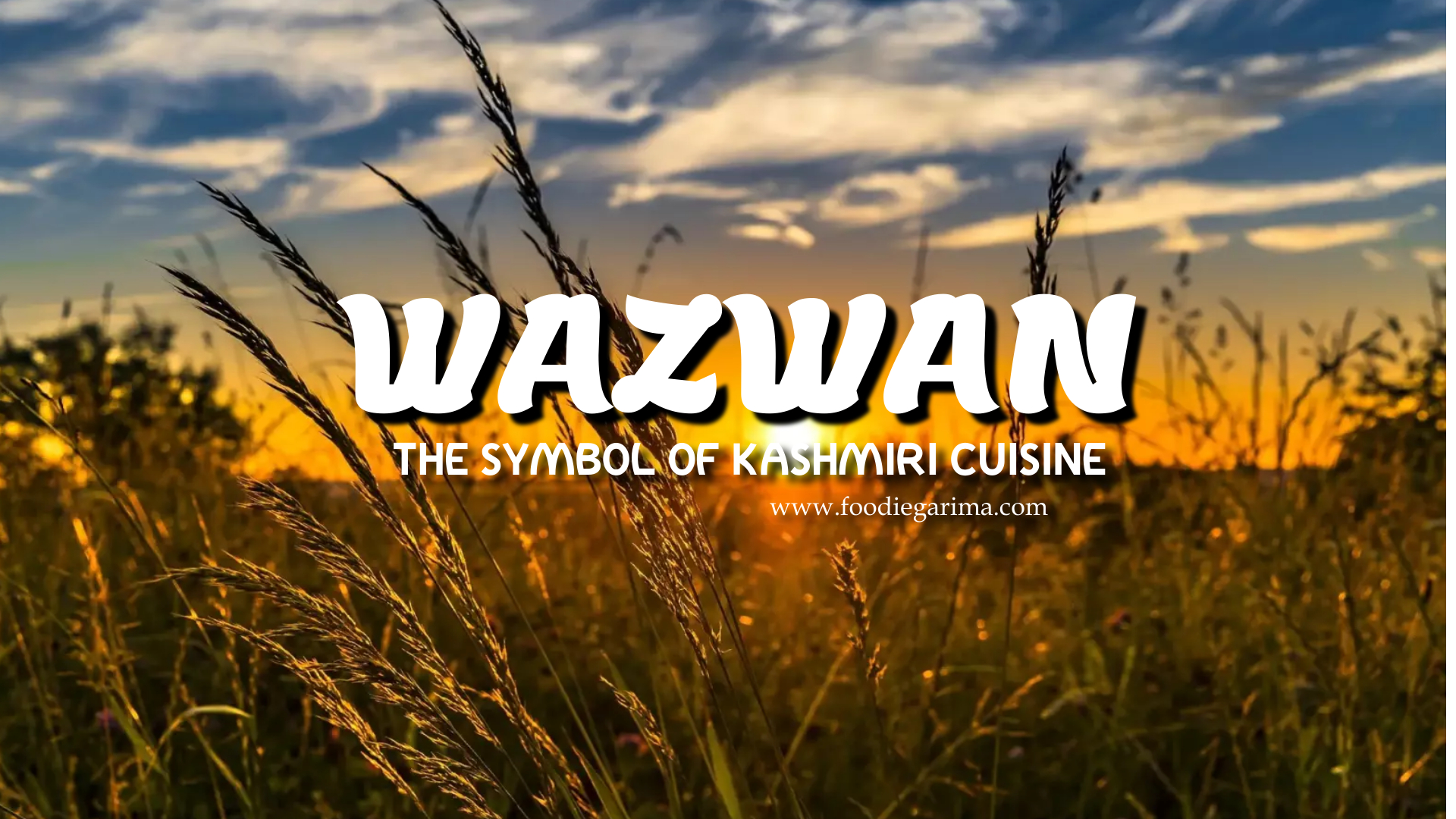25 January, 2023
WAZWAN | The Symbol Of Kashmiri Cuisine

Wazwan, 12th Century, Kashmir
What is “Wazwan”?
‘Wazwan’ is a ‘multi-course meal‘ in Kashmiri cuisine traditionally cooked during weddings and other special occasions. Initially it comprised seven dishes and went up to 23-27 dishes. But nowadays up to 36 dishes are served in ‘Wazwan’. The number of dishes served are odd figures like 11,13, 15, 17…
“Wazwan” is a Kashmiri word in which “Waz” means “cook” or “the person who cooks”. They are called “Waza” in Kashmir. The other word “Wan” means “shop” or “the place where food is prepared”. After combining both words it becomes the cook’s shop or the method in which the cook displays whatever he has prepared.
Culture and Belief:
There is a culture where four people, irrespective of their caste and financial status, eat ‘Wazwan’ together from the same plate. First of all, a portable basin (Tash-t-Neer) is brought to them and everyone washes their hands in a traditional way. Then the serving of food started on a large copper plate. People in groups of four sit together on a carpet (kaaleen) and share the meal from one plate. This represents the culture of not believing in the caste system and teaches everyone equality and regard for others.
The Preparation of “Wazwan”:
Preparation of ‘Wazwan’ requires skills and years of learning. Selecting the best quality meat, making the right cuts and grounding the meat to perfection is very important. The entire preparation is done by the skilled ‘Wazas’ (cooks) under the supervision of ‘Vaste Waza’ (Executive chef or Head Cook). The wedding is fixed only on the date when the ‘Waza’ is available.
For the preparation, freshly slaughtered lamb meat is used to get the best taste. Different parts of meat are then categorised and separated to prepare the different dishes. For instance, the
prime cuts or the best parts are used to prepare the ‘Rogan Josh’ and the remaining parts are utilized in other dishes. No part of the meat is wasted.
The food for this feast is cooked in big copper vessels and woks with a capacity of 10-15 kilos of meat. As these vessels are very huge so cooking might not be possible on gas and hence timber is used. The food is cooked slowly, keeping these huge vessels over firewoods. Cooking on a wood fire is one of the ancient means of cooking and also gives a good taste. The entire procedure is done outdoors.
How is “Wazwan” served?
The food is served by ‘Waza’ in a specific sequence, first appetiser followed by main course and then dessert. First of all, appetisers start with a few dishes like ‘Seekh Kebab’ placed over the rice. Then main course is served in the same plate which starts with ‘Rista’ with a li’l bit of gravy, followed by other dishes like ‘Rogan Josh’, ‘Mirchi Korma’, ‘Aab Gosht’ along with curd, chutney, salads, pickles, and so on.. The last dish that is served is ‘Gushtaba’ which indicates that the meal is over. Gushtaba also referred to the crowning glory of the feast.
How “Wazwan” arrived in Kashmir?
Kashmir was at the crossroad and hence it had the influences of those who came here via the silk route. It is believed that the concept of ‘Wazwan’ came here around 800 years ago with the traders who came from Persia via silk route.
These Persian or Iranian traders would bring their food ingredients along with them. The most important thing they brought to Kashmir was their method of cooking and serving food. Even the names of dishes are Persian names. These are not Kashmiri names.
Another belief is that in the 14th century when Mongols invaded India and settled down in Kashmir, they brought skilled people of various professions including cooks from Samarkand to Kashmir. These migrated cooks created a beautiful amalgamation of cuisines which can be seen in Wazwan. The descendants of these cooks are known as ‘Wazas’.
There are seven essential dishes of Wazwan : Methi Maaz, Seekh Kebab, Tabak Maaz, Rista, Rogan Josh, Aab Gosht, Gushtaba.
Wazwan is relished by Kashmiri Pandits also. They also eat meat with relish but their methods of preparation are a little different. They don’t add onion and garlic to their dishes and substitute the flavor with asafoetida. So there are two types of ‘Wazwan’. One is Kashmiri Muslim Wazwan and the other is Pandit Wazwan.
For more food stories, click here https://foodiegarima.com/blog/